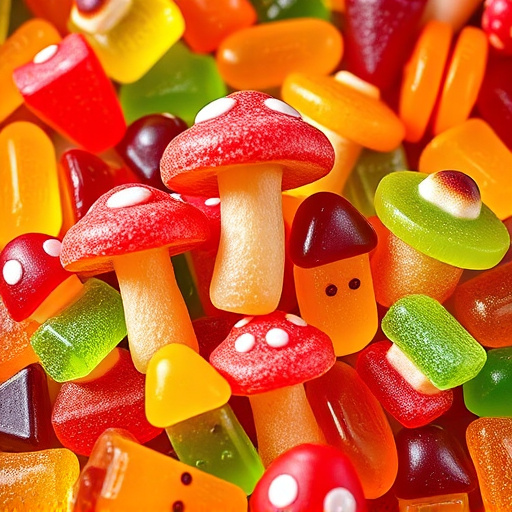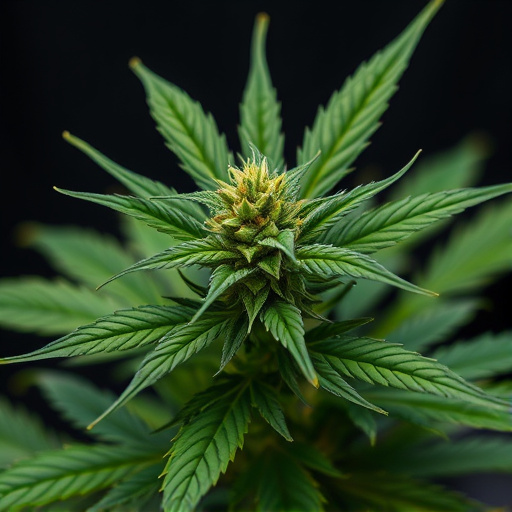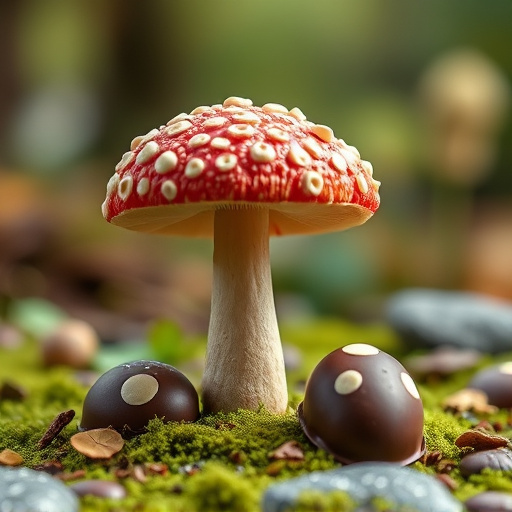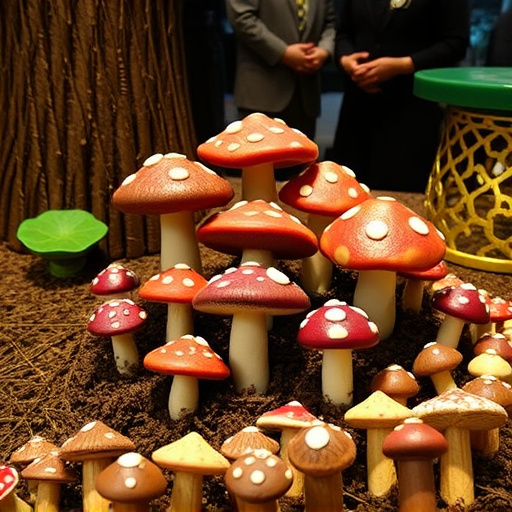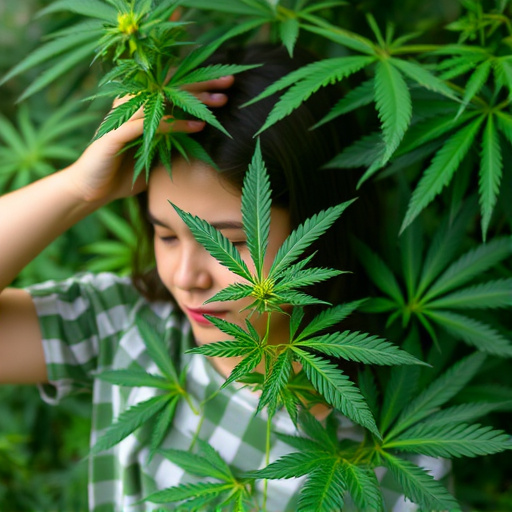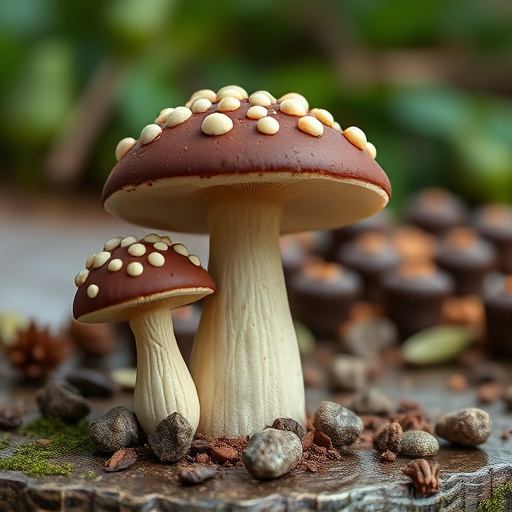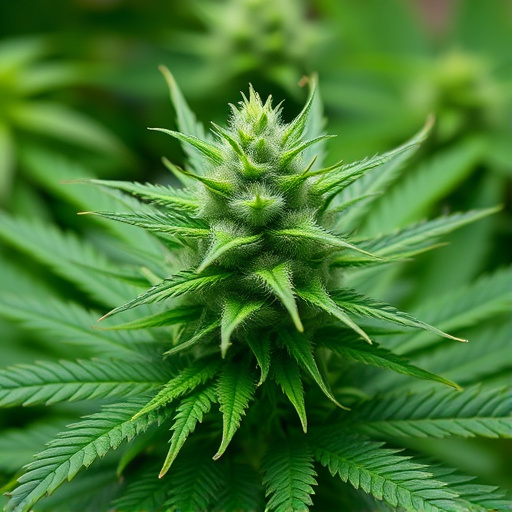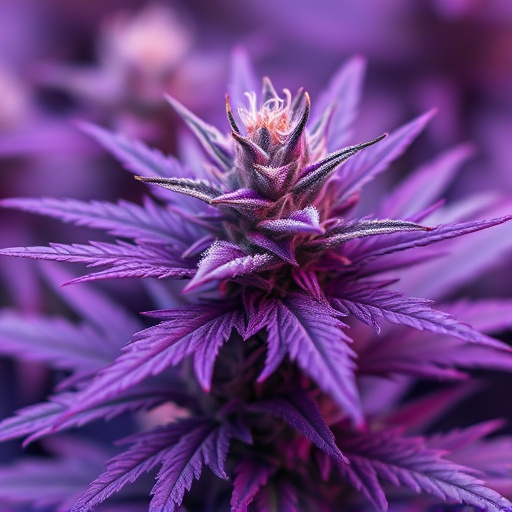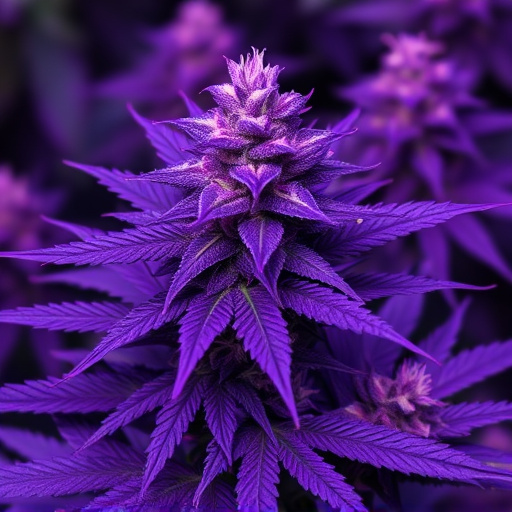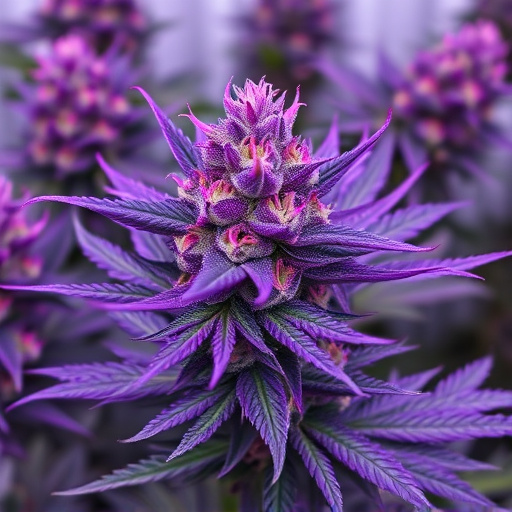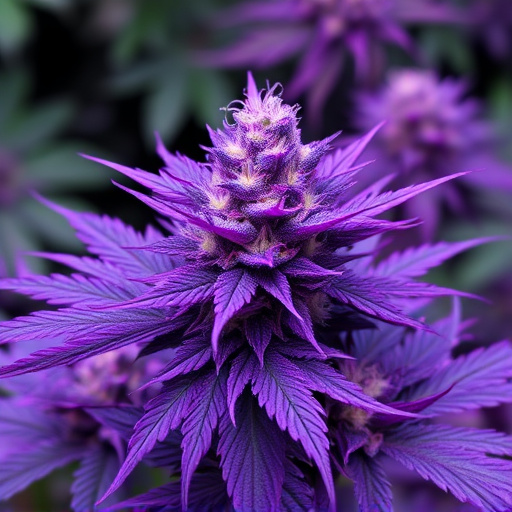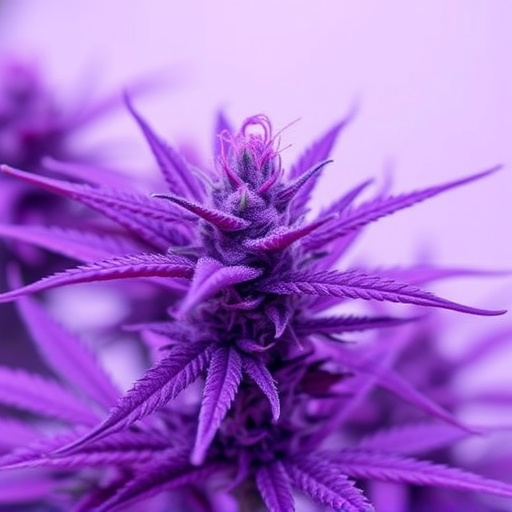Purple cannabis strains are the result of meticulous genetic manipulation over generations, focusing on anthocyanin pigments responsible for their vibrant violet tones. Genetic diversity allows for higher concentrations of these compounds, with selective breeding techniques enhancing their expression. The captivating colors not only offer aesthetic appeal but may also hold therapeutic benefits, driven by complex interactions between cannabinoids, anthocyanins, and flavonoids. These factors contribute to the desirability of purple strains among cultivators and enthusiasts.
“Unravel the mysteries behind the captivating hues of purple cannabis strains in this comprehensive guide. We explore the intricate interplay of genetics, environment, and chemistry that gives these unique varieties their striking red, blue, and purple shades. From the role of specific cannabinoid profiles to environmental conditions and the science behind anthocyanins, discover the factors that contribute to the diverse colors within the cannabis landscape. Learn practical tips for cultivators and delve into the fascinating world of purple cannabis strains.”
- Genetics and Purple Cannabis Strains
- – Discussion on the role of genetics in creating purple hues in cannabis
- – How specific cannabinoid profiles contribute to visual characteristics
Genetics and Purple Cannabis Strains
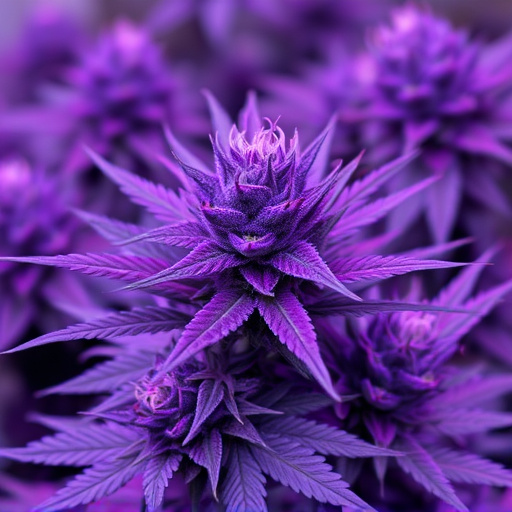
The vibrant hue of purple cannabis strains is no mere coincidence; it’s a direct result of genetic factors that have been refined over generations. These unique varieties owe their distinct color to a combination of anthocyanin pigments, which are responsible for the red and blue shades found in many plants. In the case of purple cannabis, higher concentrations of these compounds create the striking violet tones.
Genetic diversity within the cannabis plant kingdom plays a significant role in determining the presence and intensity of anthocyanins. Certain strains have been selectively bred to enhance these pigments, resulting in the captivating purple hues that have become synonymous with premium cannabis. So, when you encounter a particularly exquisite purple cannabis strain, it’s a testament to the delicate balance of genetic engineering and natural compounds that create this mesmerizing visual experience.
– Discussion on the role of genetics in creating purple hues in cannabis
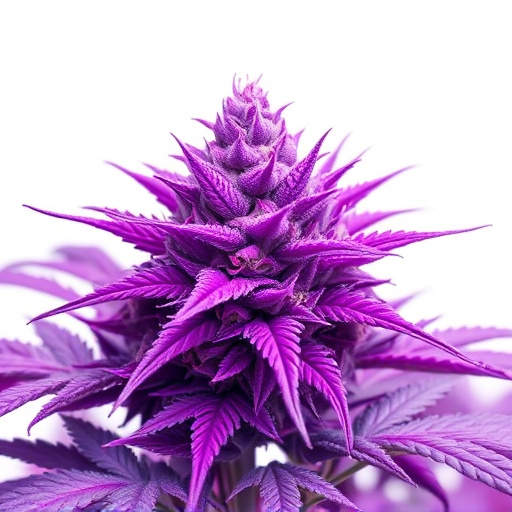
The vibrant purple hues observed in certain cannabis strains are a result of genetic modifications that alter the plant’s natural pigment production. These unique genetic variations play a pivotal role in shaping the visual appeal and distinct characteristics of purple cannabis strains. The color is often attributed to higher levels of anthocyanins, water-soluble pigments responsible for giving flowers their red, blue, and purple shades.
Genetic diversity within the cannabis plant kingdom allows for the expression of these anthocyanin-rich traits. Specific genetic mutations or natural selections have led to strains with enhanced anthocyanin production, resulting in the captivating purple tones that have garnered much interest among cultivators and enthusiasts alike. This natural variation contributes to the diverse spectrum of cannabis varieties, offering not only visual allure but also potential therapeutic benefits associated with specific colors.
– How specific cannabinoid profiles contribute to visual characteristics
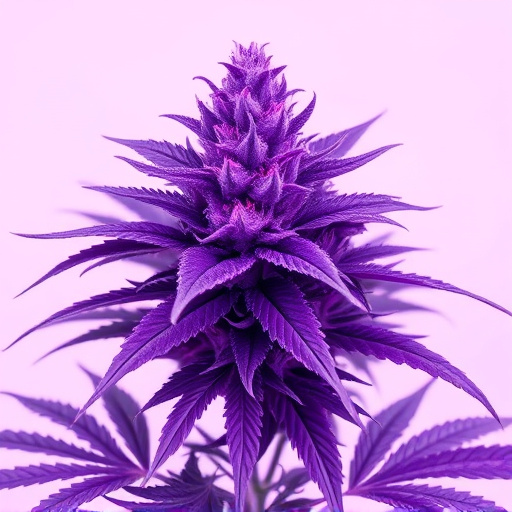
Cannabis plants, like many others, produce a wide array of chemical compounds that contribute to their unique visual and biological properties. Among these compounds, specific cannabinoid profiles play a pivotal role in determining the vibrant colors associated with certain strains, particularly the desirable purple cannabis strains. Cannabinoids are known to interact with light, influencing how chlorophyll (the green pigment) reflects or absorbs it, which, in turn, affects the overall coloration of the plant.
The pigments responsible for the red and blue hues found in these strains include anthocyanins and flavonoids. Anthocyanins, sensitive to environmental stimuli, can shift from red to purple as the plant ages or responds to stress. Flavonoids, on the other hand, are believed to enhance the stability of chlorophyll, allowing for a more intense expression of the blue spectrum. The combination of these pigments, coupled with cannabinoid interactions, results in the striking and sought-after colors characteristic of purple cannabis strains, making them a favorite among both cultivators and enthusiasts.
Purple cannabis strains have captivated both cultivators and consumers alike due to their distinctive appearance. The vibrant purple hues are not merely cosmetic; they are a result of intricate genetic combinations and cannabinoid profiles. Understanding these factors is key to appreciating the unique characteristics that make purple strains stand out. By exploring genetics and the role of cannabinoids, we uncover the science behind these captivating colors in the world of cannabis.
